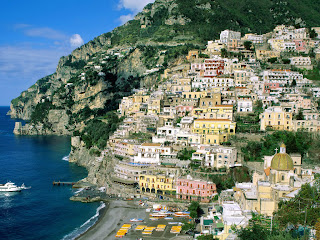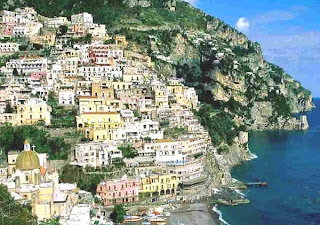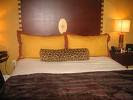Hotels in Amalfi Coast
Winding its way between Sorrento and Salemo, on the ankle of Italy's boot, is the famous Amalfi Coast Road. This heavily used stretch of tarmac, carved into the mountainsides, is renowned for its stupendous views and extraordinary hairpin bends. 'The route, along with the charming villages and towns along the way, has been one of Italy's major tourist attractions for decades.
Sorrento, situated on cliff-tops, overlooks the whole of the Bay of Naples. From here you can see Naples itself as well as Vesuvius and the island of Ischia. Steps and lifts drop down 45 m (150 ft) to the sea, where swimming is from wooden jetties rather than a straightforward beach. From here, the road twists around the rocky peninsula to Positano, where pastel hued houses of pink, peach and apricot, enhanced by brightly coloured flowers, seem to cling precariously to the mountainside, up which they scramble from the small beach below.
The road soars and descends, through occasional tunnels, curling round frightening bends where one false move could send you hurtling off into the sparkling blue sea, hundreds of metres below – these spectacular, clizzying views are unparalleled. VIsit Amalfi, set at the foot of Monte Cerreto, and admire the magnificent 9th century cathedral, built when the town was a major maritime republic. Make the trip up to the sturming medieval hill town of Ravello, a tranquil gem of a place, boasting palaces, villas, gardens, narrow, cobbled lanes and a view which writer Gore Vidal rated as the most beautiful in the world.
From Amalfi, the road passes through Vietri, known for its ceramic production since the 15th century, and a mere 5 km (3 mi) farther, head into the bustling port area of Salerno, an historic town with a wealth of splendid palaces and churches.
HOW
By car or bus
WHEN TO GO
April to June or September to November; during the high summer months (July and August) the area suffers from too many visitors and far too much traffic.
TIME IT TAKES
About three hours, but you'll find it far more rewarding to spend two or three nights in different places along the way.
HIGHLIGHTS
Amalfi's Wednesday market.
The Gratta dello Smeraldo, a swimming spot accessible only by boat from Amalfi or Positano.
The gardens of the Villa Cimbrone in Ravello.
The summertime music festival honouring Wagner, which is held in the gardens of the Villa Rufolo in Ravello.
A boat trip from Positano to the Grotta delle Matera, the three Li Galli islands and Capri.
YOU SHOULD KNOW
The Amalfi Coast is a UNESCO World Heritage Site.









































